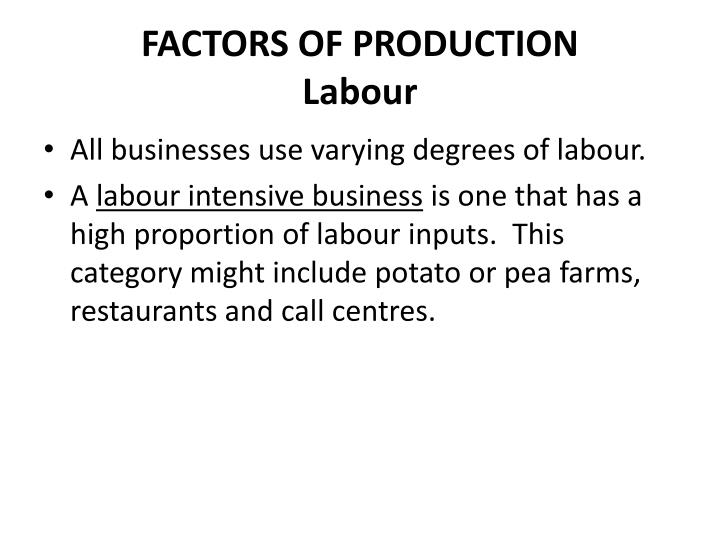

Labor refers to human resources (also called human capital)-physical or intellectual. Resources that are cultivated or made with human effort can’t be considered natural resources, which is why crops aren’t natural resources. It’s also possible to invent new uses for natural resources (using wind to generate electricity, for example). These natural resources can be renewable, such as forests, or nonrenewable, such as oil or natural gas. New natural resources-or new ways of extracting them (such as fracking, for example)-can be discovered, though. Examples of natural resources are land, trees, wind, water, and mineralsĪ key feature of natural resources is that people can’t make them.
#LIST 4 FACTORS OF PRODUCTION HOW TO#
In order to provide benefit, people first have to discover them and then figure out how to use them in the the production of a good or service. Natural resources have two fundamental characteristics: (1) They are found in nature, and (2) they can be used for the production of goods and services. Capital (machinery, factories, equipment).There are four categories of resources, or factors of production: The following video will give you an overview of what economists mean when they talk about resources or factors of production. What makes something a resource? For one thing, it needs to be productive. Resources are also called factors of production.


Simply put, resources are the inputs used to produce outputs (goods and/or services). \)Īll businesses, both for-profit and nonprofit, need resources in order to operate.


 0 kommentar(er)
0 kommentar(er)
